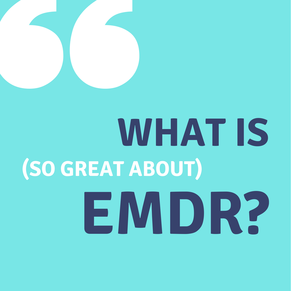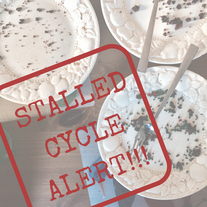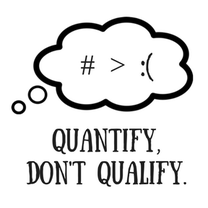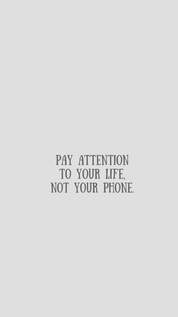 What is EMDR Therapy? First, "EMDR" stands for "Eye Movement Desensitization and Reprocessing." Translated, this means that EMDR therapy uses side to side eye movements (bilateral stimulation) to help your brain process old "stuck" memories so they become less triggering. A simpler description might be, "A Therapy that Clears the Clogged Up Places In Your Brain." What's so great about it? Research shows that EMDR is highly effective in healing trauma, including big "T" life-threatening Trauma like an assault or a car accident, and little "t" trauma like bullying, an emotionally abusive parent or social anxiety. Trauma of either kind can create what I think of as neurological knots - places in the brain where feelings are tangled up and stuck. In these places, thoughts, feelings and events (past, present or future) can trigger strong, inescapable thoughts and emotions that are hard to get around. EMDR is a powerful tool to loosen those tangles and get the regular network of thoughts and feelings back on track. I read somewhere once that mental health isn't about always feeling happy. It's about having all the feelings and moving on from each to the next in a timely manner and being able to keep them all in perspective. EMDR helps this happen. How does it work? But how does it work? Here are the logistics. A client is guided to think about whatever it is that is triggering for them while experiencing bilateral stimulation (BLS). The BLS "supercharges" their thoughts in those tangled up places so that that those knots are loosened up and thoughts can flow more normally through the brain without triggering strong, debilitating reactions. Just for clarification, bilateral stimulation means stimulating the left side of your body and then the right side, back and forth and back and forth. (This can be done by following something back and forth with your eyes like watching a tennis match, or by listening to beeps in alternating ears via headphones or feeling vibrations in alternating hands via little disks you hold in your hands.) A few examples Here are a couple of examples. For most people, seeing a white truck is no big deal and has no impact on day-to-day life. However, if you've experienced a car accident involving a white truck, seeing one might cause you to feel afraid, break out in a cold sweat, send your heart racing, and cause you to avoid driving. These reactions have a profound impact. You might plan your entire life around avoiding driving or be constantly anxious. EMDR sessions can loosen the tangle you have around the accident and put white trucks back in their proper context where they don't dominate your decision-making. An example of small "t" trauma might be the impact your parents' divorce has had on your ability to engage in healthy relationships. By identifying and reprocessing those memories, the knot of pain involved in thinking about relationships can be untangled and your decision-making about relationships can be clearer. Whatever the tangle is about, it can be loosened. Some people say EMDR helps reduce the "noise" or the "story" or "drama" about things that used to be very hard to deal with. Benefits One of the other benefits of EMDR is that the gains seem to be permanent. In one study, a group of clients with depression were broken into two groups. One was treated with Prozac, and another was treated with EMDR. After several months, both groups ended treatment. The group who had taken Prozac lost their gains without it, but the EMDR group maintained their progress. (The Prozac group was subsequently offered EMDR.) Another great benefit of EMDR is that is includes the body in therapy. During EMDR sessions, we focus not only on thoughts and emotions, but on feelings in the body as part of the healing process. The brain and the body need to work together to truly heal because we store so many experiences, good and bad, in our bodies. EMDR offers a safe and effective way to do that. You're the Expert Finally, EMDR is yet another example of how people are experts on themselves. In EMDR sessions, the mind untangles itself. The therapist doesn't do it - the client does. This is really true for all therapy - the client is the healer and the therapist facilitates and witnesses. EMDR sessions are a constant reminder to me that we are wiser than we know and that with the proper structure and support we can heal and be happier and more productive. It's a beautiful thing to see.
4 Comments
 How's your living space feel lately? Cozy? Comfortable? More importantly, how do you feel when you think about your living space? Overwhelmed? Frustrated? Embarrassed? Ashamed? Even if it's not a client's primary issue, when I hear someone struggling with their house I ask questions because our homes so deeply affect the way we feel. There are shelves upon tidy shelves of books about how to keep house and I'm not about to dive into that arena no matter how fascinating, but there is one idea I return to often that seems to help. I call it "completing the cycle." I first came up with this idea when I was reading the book Home Comforts by Cheryl Mendelson. It's huge and it covers everything from how to iron to what bacteria in your kitchen can kill you (eek!). My favorite part is the very first chapter in which she talks about how the best-feeling homes run on routines and rhythms that keep necessities and comforts in abundance. For her, these routines are the ultimate self-care. Routines and rhythms, I realized, are rooted in cycles. (Yes, there are way more than just housekeeping cycles, but we'll stick with those for now.) There's the laundry or dirty dishes kind of cycle: clean stuff gets dirty, we clean it, put it away, and start again. Or the food cycle: we buy it, prepare it, eat, it, buy some more. Or you can mash up those cycles and call it dinner. Once you look around, you can see lots of cycles, like bills, beds, lawns, toys, library books, carpets ... and you can see all the places those cycles have stalled out. The laundry cycle that stopped on the couch. The dish cycle that stopped in the sink. The cup-of-tea cycle that stalled with the tea envelope on the counter. Most of the mess in our houses is from stalled out cycles. There are lots of things about these cycles that we can control (like content - take out or cooking?) but for the purposes of this discussion, the most important is duration. It's pretty simple. Short cycles are usually tidier, long cycles are messier. A short cycle means cleaning up dinner that night. A long cycle means days of dishes in the sink (yes, this could also be considered "batch processing," very efficient!). If you look around and your house (or your life, for that matter) feels out of control, some of it is probably stalled cycles. When you can see that, cleaning becomes easier - you can pick just one cycle to finish up instead of feeling overwhelmed by the whole mess. And eventually you can start to think about completing cycles when you're in them or, even better, when you start them! That makes things feel a lot easier because you can be deliberate about stopping mid-cycle - we've all had nights when we're too tired to clean the kitchen. And if that's the case, you can go to bed without guilt and pick up again where you left off when you can. If you're mindful of your cycles, you're in control of them, not the other way around. Keeping up with cycles (at least mostly) might seem like more work but here are some things to keep in mind. 1) You're going to finish them eventually, so why not right away if you have time? 2) It doesn't actually save energy to do them later - you still have to do them (unless you get someone else to do them for you!). 3) Finishing something up makes it easy to start again anytime. And 4) You get a reward: necessities and comforts in abundance. Which, for me, at least, means feeling cozy at home AND having a whole bunch of things crossed off your Tracking List. Awesome.  Have you ever decided to get to work on something and then decided it would be too hard, take too long or be or too upsetting? Sometimes this happens because you're tired, hungry, frustrated or over-caffeinated but sometimes it's because you have a very bad story in your head about what you have to do. If this happens to you, try quantifying, not qualifying. Turn it into a simpler task by focusing on the simple mechanics of it and taking away the story you're telling in your head. First, ask yourself, "What's so BAD about this?" What's the drama about?! Have you ever wanted to ask a five year old WHY ON EARTH she's sobbing on the floor of the grocery store?! (I have...) If it helps, see yourself as that five your old and ask, "Seriously! What's the drama?!" (But try to actually answer instead of sobbing uncontrollably or throwing your shoes at the ceiling.) Here's an example. I had a client who hated to wash dishes. Every time she looked at her dirty dishes she felt overwhelmed and frustrated. When she asked herself, "What's the drama here?" she realized the dishes reminded her of all the ways she felt like she was a terrible, total, unredeemable failure of a housekeeper, completely incapable of accomplishing anything domestic. Ever. She realized it wasn't the dishes, it was the shame she had around housekeeping that stopped her. The shame was pretty big. Second, ask yourself, "If I broke this down into simple minutes/items/mechanics how long/what would it take?" Break it down into anything quantifiable, unemotional. This works especially well for small tasks like dishwashing: "Three bowls, four mugs, three forks, ten spoons, a whisk and a frying pan." It works for bigger tasks, too, like a presentation, but it's about making the steps as small and simple as possible so you can get started, like, "Turn on the computer, open a word document, take out notes from meeting about presentation, read notes, list topics..." I could go on, but you get the point. When most people do this, they feel better because tasks are more manageable. The client who hated washing dishes found herself saying, "Get over this! It'll take eight minutes!" She timed it, and yeah, it was eight. Eight minutes of work equalled a small course correction with significant long term impact on her attitude about housekeeping. Since then she's gotten curious about how long other things take. Mowing the lawn: 22 minutes, putting in laundry: five minutes, and the list goes on. All of that is so much more manageable. Take away the story. It's so much easier to do things when they're just ... things.  How many times a day do you pick up your phone out of habit? How many times do you realize that's what you're doing? How many times has that stopped you? Here is a great article that includes seven wallpapers telling you to quit it. It's a brilliant idea. And guess what? If you google, "iPhone wallpapers to help you put your phone down," you'll end up with quite a few options (a lot of them intended to tell your friends to put your phone down...). It's so hard to be mindful when we really need to be mindful. This is helpful. P.S. You can download the image on the left. :) If you click on it, it'll open in a new window. |
 RSS Feed
RSS Feed